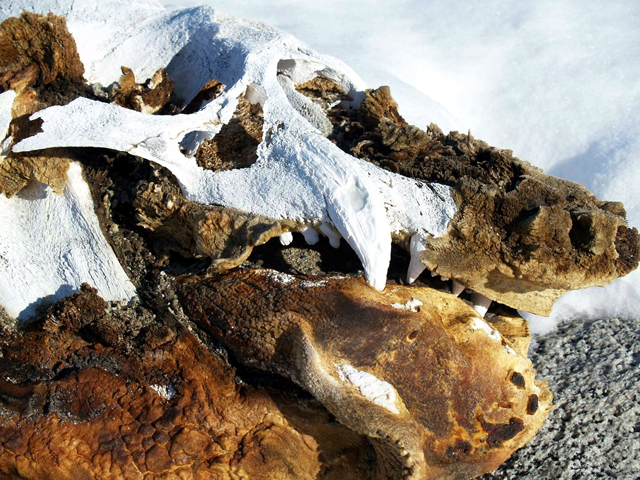Cradle to graveStudy provides insight into evolution and extinction of vanished elephant seal colonyPosted August 7, 2009
An extinct southern elephant seal colony that once existed in huge numbers along sandy and rocky beaches in Antarctica has provided new insight into how quickly a species can respond to the emergence of a new habitat as climate changes — and just as quickly disappear. That’s one of the findings in a paper published in the journal PLoS Genetics in July by scientists who studied DNA sequences from the organic remains of seals found along a nearly 300-kilometer stretch of coastline in Victoria Land, just north of the U.S. Antarctic Program’s McMurdo Station Mark de Bruyn “I believe the research is quite novel, as it tracks the population from inception to extinction,” de Bruyn said via e-mail while conducting fieldwork in Borneo. “The short timeframe is also noteworthy. Most of the ancient DNA work to date has focused on much older timeframes.” One exception, he added, has been work by David Lambert The Victoria Land colony would have represented the southernmost extent of southern elephant seals in the world, according to Brenda Hall The closest southern elephant seal colony today lives on the subantarctic Macquarie Island, which lies about halfway between Antarctica and Australia. The Victoria Land colony originated from Macquarie, home to about 80,000 seals, de Bruyn said. He estimated the Victoria Land colony had as many as 220,000 breeding individuals at its height, larger than any extant, or existing, colony today. Climate change, the scientists say, allowed the colony to both thrive and later collapse. It appears the ice sheet along the coast began to recede about 8,000 years ago as the interglacial climate warmed — the time period between ice ages, the most recent being the Holocene. In addition, the sea ice that would have blocked access to the beaches appears to have disappeared or declined enough for long periods of time each year to allow the seals to breed and molt on land, Hall said. The colony then began to decline about 1,000 years ago, according to the researchers, indicating yet another change in the climate. “Our main conclusion is that things have cooled off in that part of the western Ross Sea over the last 500 to 1,000 years and the sea ice has re-expanded,” Hall said. “We also see some evidence of glacier re-expansion at that time as well.” Hall said it is unclear just how much warmer the climate was before it shifted again. She said the next logical step would be to create a model to determine what sort of climate might have existed to create relatively sea ice-free conditions favored by the southern elephant seals, massive pinnipeds whose male bulls can tip the scale at 4,000 kilograms. “The ocean had to be warmer. How much warmer, I don’t know,” she said. The Ross Sea cooling period roughly coincides with the so-called Little Ice Age in Europe, which brought colder winters to both Europe and North America for several centuries. There is still quite a bit of scientific debate on the timing of the Little Ice Age and its global connectedness. “The timing of this cooling in the Antarctic is not exactly the same as the Little Ice Age,” Hall said, adding that her team and colleagues in New Zealand are just beginning to work on that problem. “It may be a bit more complicated than that.” |



For USAP Participants |
For The Public |
For Researchers and EducatorsContact UsNational Science FoundationOffice of Polar Programs Geosciences Directorate 2415 Eisenhower Avenue, Suite W7100 Alexandria, VA 22314 Sign up for the NSF Office of Polar Programs newsletter and events. Feedback Form |


